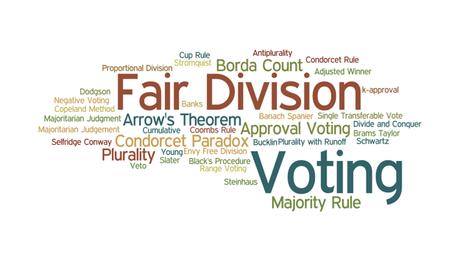
Much of our daily lives is spent taking part in various types of what we might call “political” procedures. Examples range from voting in a national election to deliberating with others in small committees. Many interesting philosophical and mathematical issues arise when we carefully examine our group decision-making processes.
There are two types of group decision making problems that we will discuss in this course. A voting problem: Suppose that a group of friends are deciding where to go for dinner. If everyone agrees on which restaurant is best, then it is obvious where to go. But, how should the friends decide where to go if they have different opinions about which restaurant is best? Can we always find a choice that is “fair” taking into account everyone’s opinions or must we choose one person from the group to act as a “dictator”? A fair division problem: Suppose that there is a cake and a group of hungry children. Naturally, you want to cut the cake and distribute the pieces to the children as fairly as possible. If the cake is homogeneous (e.g., a chocolate cake with vanilla icing evenly distributed), then it is easy to find a fair division: give each child a piece that is the same size. But, how do we find a “fair” division of the cake if it is heterogeneous (e.g., icing that is 1/3 chocolate, 1/3 vanilla and 1/3 strawberry) and the children each want different parts of the cake?
